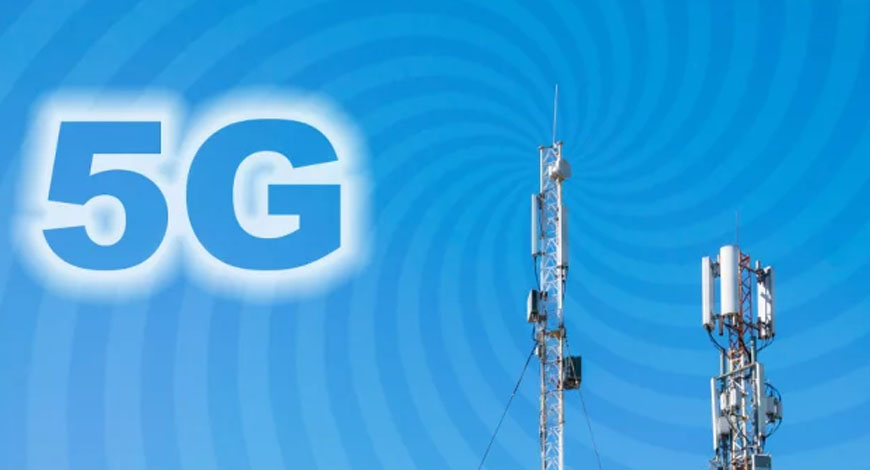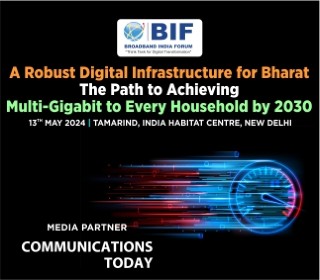5G
Five years in, is 5G a success or failure?

Nearly 15 years ago, leading scientists began ramping up research into the millimeter wave (mmWave) spectrum, with the expectation that the high band would become the de facto band for 5G. The vision was that this spectrum would be one of the foundational 5G building blocks, delivering Gbps peak speeds and sub-10 ms latencies.
This type of performance was, after all, needed to support a wide range of use cases that had yet to be defined. Then, back in 2015, the global 3GPP standards RAN workshop narrowed down the 5G use cases to enhance mobile broadband (eMBB), massive machine-type communication (mMTC), and ultra-reliable and low-latency communications (URLLC).
This use case vision would serve as the compass to ensure that 5G would be more than just another G. With more reports coming out that most of the time spent on this revolutionary smartphone is to eliminate boredom, hopes that 5G could unleash innovation and fuel productivity improvements were growing. Some experts say they believe that 5G could become a general-purpose technology (GPT), potentially impacting many sectors of the economy and accelerating the path of economic progress.
“5G will have an impact similar to the introduction of electricity or the automobile, affecting entire economies and benefiting entire societies,” said Qualcomm‘s former CEO Steve Mollenkopf. Not everybody is as optimistic. William Webb, author of the book The 5G Myth, does not believe 5G will deliver anything that you can’t deliver with 4G. Meanwhile, the Dell’Oro Group predicted in 2019 that URLLC/mMTC would make up 1% of the cumulative 2019-2024 5G RAN revenues, and wireless carrier revenues would remain flat.
As we are approaching the five-year mark of commercial 5G, the timing is right to review the progress relative to hopes and hypes. Let’s start with monetization. One of the main reasons that skepticism about 5G, 5G-Advanced and now 6G is growing is simply that 5G has so far failed to expand the use cases beyond MBB/FWA and ultimately change the revenue trajectory for the carriers.
Our estimates show that global wireless carrier revenues increased at a 1% CAGR between 2010 and 2022, implying that both 4G and 5G have fallen short when it comes to this key metric. While you could make the argument that 5G is doing slightly better than 4G in nominal USD terms, the reality is that wireless revenues were flat in 2022 and the first of 2023. Helping to explain this stable trendline is the downward pressure on ARPU, which is mostly offsetting the growth in subscriptions.
More importantly, 5G is still mostly about having fun. Granted, 5G2B is gaining momentum in some markets. China, for example, is starting to make industrial strides, in part because of national directives. The Set Sail Action Plan for 5G Application targets 35% of 5G penetration in large industrial enterprises by 2023. And there is progress outside of China as well, spurred on by the availability of local spectrum. Private wireless investments globally are now increasing at a much faster pace than public MBB capex; however, private 5G still accounted for about 1% of the 2022 5G RAN market. In other words, the industry has some ways to go before the enterprise is in the driver’s seat.
This initial focus on building out the 5G RAN coverage and reducing the cost-per-bit for the known use cases has been the main impetus for nonstandalone 5G and diverging 5G RAN and core investments. As of the third quarter of 2023, approximately 15% of the commercial 5G networks had launched 5G SA networks for consumers (Dell’Oro Mobile Core Network Report). As a result, cumulative 5G core/5G RAN ratios for the 2020-2022 period are less than half of the LTE core/LTE RAN ratio for the 2010-2020 period. The gap is even more significant when we exclude China.
While there is no question that operators face challenges with expanding the pie, we also need to recognize the successes with the existing pie. According to the GSA, around 300 (37% of the operators), have deployed 5G, covering nearly 40% of the global population with 5G (Ericsson Mobility Report).
To put things into perspective, GSMA predicted the same coverage milestone would be reached in 2025. From a subscriber adoption perspective, 5G is on track to account for about 18% of global subscriptions in 2023, accelerating at a much faster rate than LTE, which reached about 7% penetration in year 4. Although outdoor and indoor coverage is far from perfect, 5G is on track to support a fourth of the global mobile traffic in 2023 and more than half of the combined MBB plus FWA traffic by 2025 (Ericsson Mobility Report).
FWA is not a new use case. However, the ability to offer 0.5 TB per month packages and position FWA as a fiber alternative instead of a DSL competitor is new. With around half of the approximately 300 commercial 5G networks offering 5G FWA services and FWA accounting for around a fifth of the combined mobile+FWA data traffic (GSA, Ericsson), the rise of 5G FWA is a positive development.
Helping to explain the success with the existing MBB/FWA use cases is the proliferation of Sub-6 GHz Massive MIMO. For a technology that was initially viewed as too expensive and being mostly an economical fit for select high-traffic locations and hotspots, Massive MIMO has come a long way in just a few years, ramping at a much broader and faster pace than expected. In addition to the capacity upside, Massive MIMO played a crucial role in extending the range, enabling operators to leverage their existing 4G grid and ultimately produce a step function reduction in data delivery costs. The SK Telecom 5G/6G white paper focusing on 5G lessons points to a 70% reduction in cost-per-bit relative to LTE.
Not all 5G is the same, and the progress varies. 5G has so far delivered significant cost reduction and capacity improvements for the existing use cases, but it has not yet been the game-changer for enterprises that some envisioned. And as Webb predicted, many of the things we do today can probably be done with 4G. Does this mean 5G was a success or a failure? Did we oversell the new shiny objects and undersell the basics? I would say yes to all of the above, with a caveat.
Hope, hype, visions and potential TAMs are not the same as expectations and forecasts. As an example, the private 5G RAN opportunity is massive – potentially worth tens of billions in annual revenues. But the forecast is for private 5G RAN to surpass $1 billion in revenues by 2027. This is why we (and other analysts/industry participants) issued projections that new use cases beyond the traditional MBB/FWA scenarios would not be the priority in this initial MBB-driven cost reduction phase and they would comprise a negligible share of the 5-year capex.
When we compare where 5G is today relative to where we thought we would be five years ago, the main disconnect is with the existing use cases. New use cases and mmWave adoption have been slow, mostly in line with projections. Operator revenues have stayed mostly flat, also in line with expectations. However, the transition from 4G to 5G in the sub-6 GHz spectrum to support existing MBB/FWA applications has been much faster than we (and the industry) initially expected.
In conclusion, there is nothing wrong with a little bit of optimism and thinking big, as long as we can separate the long-term vision from short-term expectations. Too much hype can, of course, turn the tides and fuel skepticism or result in overly optimistic forecasts, especially if the key players have vastly different internal and external expectations (which, in some cases, were true with 5G). But before we label 5G a success or failure as it approaches its fifth anniversary, we should keep in mind that it took 10 years for the enterprise Wi-Fi installed base to reach 10% of the projected 2027 installed base. According to Amara, it is still early days in this journey. SDxCentral















You must be logged in to post a comment Login